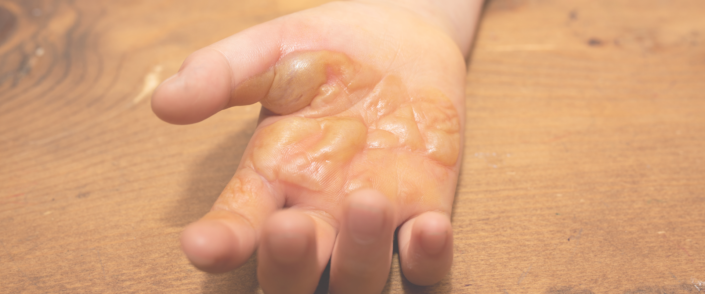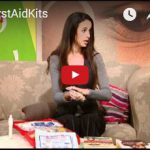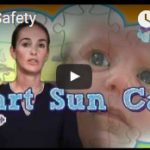First Aid Treatment for burns, (any second degree or third degree burn requires medical attention ASAP!)
- Remove the person from the hazardous area.
- Cool down the burn site for at least 15-20 min under running water – this is the golden rule.
- Meat (flesh) continues to cook even when it is removed from the heat. By running water over the area you are stopping the burning process.
It doesn’t matter how big or small the burn is, it has to be cooled down under running water. - If it is a big area, stand in the shower, or alternatively, use a hose pipe or bottled water to simulate a constant flow of water.
- Burnshield® or Hydrogel® is the only safe treatment to apply to any wound, after it has cooled down.
- You can cover the Burnshield® with plastic wrap to keep the shield moist and keep it in place only after the burn has cooled down properly! Not less than an hour after cooling with water and application of the Burnshield®.
This will seal off the Burnshield® (keep it moist and prevent it drying out).
Re-assess the burn, and keep the Burnshield® or Hydrogel® dressing moist for 12 -24 hours.
A few things you should never do:
- Do not break or pop a blister.
- Do not remove clothes that cover the burnt skin.
- Do not apply anything but Burnshield® or Hydrogel® to the wound.
- Do not apply ice to the burnt area.
- Do not put the burnt area in a bucket of water, the heat will disperse in the water, and there won’t be any cooling down of the burn.
- Do not use tin foil or plastic wrap to keep Burnshield® or Hydrogel® in place if the wound has not been cooled off completely ( the burn can intensify if sealed off with plastic and not cooled off).
- Do not delay to seek medical attention.
- If you do not have Burnshield®, wet a cotton pillow slip, put it over the wound, followed by plastic wrap to prevent the pillow slip from drying out and go to the nearest medical facility.
Burns: do you know the different types & how to treat them?
With National Burn Awareness Week (6-12 May) still top of mind, as well as the knowledge that as we approach winter our children will be increasingly exposed to heating appliances and fires, we asked Sr. Catherine Rodwell from Survival CPR to break down the different types of burns and explain

Caregiver Refresher Course
Caregiver Refresher Course Our Survival® Caregiver Refresher Course is specifically designed to enhance and update the skills of qualified Caregivers already working within the Caregiving field. This course is not a replacement for our full Survival® Caregiver Course but aims to build upon a Caregiver’s existing knowledge and to ensure





